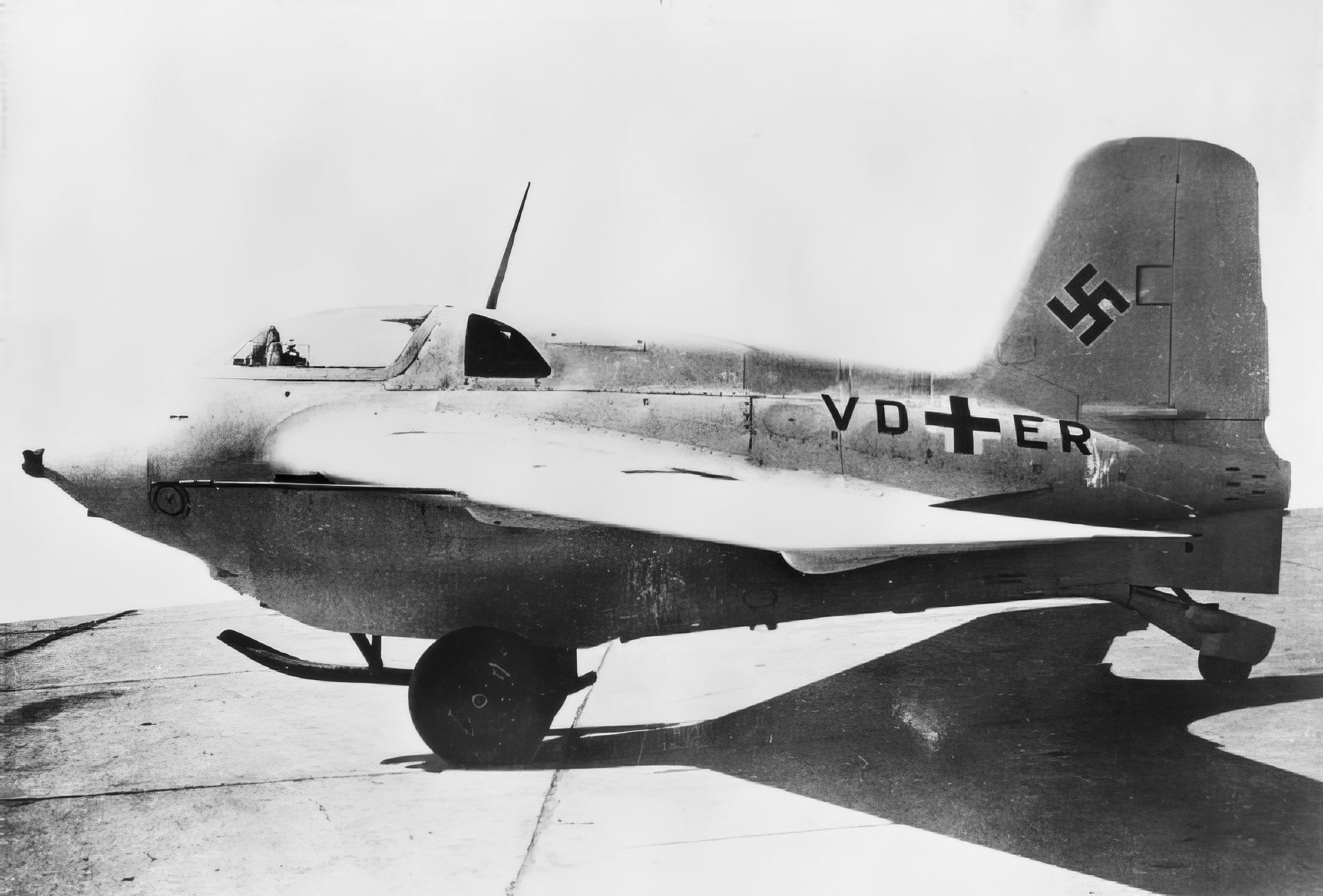Me 163 Komet replica to fly in Germany
Heinz-Dieter Sippel plans to unveil a powered, flying replica of the Messerschmitt Me 163 Komet at the 2024 AERO Friedrichshafen.
Heinz-Dieter Sippel, an aviation enthusiast and skilled craftsman, has been meticulously working on a passion project - a fully functional, powered replica of the iconic Messerschmitt Me 163 Komet that he plans to unveil at the 2024 AERO Friedrichshafen.
Me 163B Komet at the National Museum of the United States Air Force, Dayton, Ohio
FLUG REVUE, a prominent aviation magazine in Germany, has recently reported on an extraordinary project that has been underway for several years. Heinz-Dieter Sippel, a skilled engineer and aviation enthusiast, has been working tirelessly to construct a flying and powered replica of the Messerschmitt Me 163 Komet, an innovative aircraft that was ahead of its time.
The Komet was a revolutionary aircraft that redefined the limits of speed and agility. It was a marvel of engineering and the only operational rocket-powered fighter aircraft in history. Furthermore, it was the first-ever aircraft of its kind to exceed 1,000 kilometres per hour (620 mph) in level flight, setting new standards for speed and performance
The Komet's powered flight time was 7 minutes and 30 seconds, during which it could cover vast distances at breakneck speeds. It was capable of reaching an altitude of 12,000 meters in just 3 minutes and 30 seconds from a standing start, making it a formidable aerial weapon in the hands of skilled pilots. The Komet was a true masterpiece of aviation engineering and a testament to human ingenuity and innovation.
Heinz-Dieter Sippel plans to unveil his masterpiece at the 2024 AERO Friedrichshafen, an international trade show for general aviation. Visitors can expect an awe-inspiring display of engineering ingenuity and a fitting tribute to one of the most iconic aircraft in history.
Me 163B Komet in Point Cook, Melbourne in 1950
Messerschmitt Me 163 Komet
The Messerschmitt Me 163 Komet was a groundbreaking rocket-powered interceptor plane that was designed and manufactured by the German aircraft company Messerschmitt. This exceptional aircraft has a unique and historic background, as it was the only fighter plane in history to be propelled by rockets, and the first piloted aircraft of any kind to surpass a top speed of over 1,000 kilometres per hour (620 mph) in level flight.
The development of the Me 163 started in 1937, under the direction of the German aeronautical engineer Alexander Lippisch and the Deutsche Forschungsanstalt für Segelflug (DFS). Initially, it was an experimental program that drew upon conventional glider designs while integrating various new innovations, such as the rocket engine. However, the program faced organizational issues until Lippisch and his team were transferred to Messerschmitt in January 1939. Plans for a propeller-powered intermediary aircraft were quickly abandoned, and the focus shifted to rocket propulsion. On 1 September 1941, the prototype performed its maiden flight, quickly demonstrating its unprecedented performance and the exceptional qualities of its design. German officials were impressed and promptly enacted plans to introduce Me 163 point-defence interceptors across Germany. In December 1941, work began on the upgraded Me 163B, which was optimized for large-scale production.
In early July 1944, German test pilot Heini Dittmar reached an astonishing 1,130 km/h (700 mph), breaking an unofficial airspeed record that remained unmatched by turbojet-powered aircraft until 1953. That same year, the Me 163 began flying operational missions and was typically used to defend against incoming enemy bombing raids. As part of their alliance with the Empire of Japan, Germany provided design schematics and a single Me 163 to the country, which led to the development of the Mitsubishi J8M. By the end of the conflict, roughly 370 Komets had been completed, most of which were being used operationally. However, despite its innovative design and impressive capabilities, the Me 163 was less effective in combat than expected, and some of its shortcomings were never fully addressed. Capable of a maximum of 7.5 minutes of powered flight, its range fell short of projections, significantly limiting its potential. Efforts to improve the aircraft were made, most notably the development of the Messerschmitt Me 263, but many of these did not see actual combat due to the sustained advancement of the Allied powers into Germany in 1945.
After being introduced into service, the Me 163 was credited with destroying between 9 and 18 Allied aircraft, but it also incurred significant losses of its own. Numerous Me 163 pilots were killed during testing and training flights, partly due to the later models' use of rocket propellant, which was highly volatile, corrosive, and hazardous to humans. One noteworthy fatality was that of Josef Pöhs, a German fighter ace and Oberleutnant in the Luftwaffe, who was killed in 1943 due to exposure to T-Stoff in combination with injuries sustained during a failed takeoff that ruptured a fuel line. Besides Nazi Germany, no other nation ever made operational use of the Me 163. The only other operational rocket-powered aircraft was the Japanese Yokosuka MXY-7 Ohka, which was a manned flying bomb.
8th prototype aircraft of the Me 163B.
The replica
The Messerschmitt Me 163 Komet has been a source of fascination for aviation enthusiasts all over the world since its introduction. The aircraft's unique design and capabilities have made it a favorite among aviation aficionados, and now a remarkable 1:1 scale replica of the legendary plane is set to be unveiled at the 2024 AERO Friedrichshafen trade show.
The replica has been crafted by engineer Sippel, who has used composite materials and lightweight sandwich construction to create a faithful copy of the original. The replica measures an impressive 5.99 meters from nose to tail, with a wingspan of 9.3 meters. What's truly remarkable is that despite the original "Krafteis" weighing in at a hefty 1,905 kg, the replica is incredibly lightweight, weighing only 240 kg.
The replica is powered by a JetCat turbine that generates a kilonewton of thrust using kerosene (Jet A-1), diesel, or petroleum. It can reach a comfortable speed of about 140 km/h and can be started either by F-tow or self-start, making it versatile in different situations.
The German Society for the Preservation of Historic Aircraft and the company Silence Aircraft have supported Sippel's dedication and hard work. The unveiling of the replica is set to take place at the Friedrichshafen Exhibition Centre, located on the shores of Lake Constance next to Friedrichshafen Airport in Germany, during the 2024 AERO Friedrichshafen trade show, which is Europe's most significant trade show for general aviation.
The project is an incredible feat of engineering that demonstrates the dedication and hard work of Sippel and his team, evident in the amazing replica they have created. The replica is expected to attract aviation enthusiasts from around the world to the trade show, where they can marvel at this impressive work of art.







